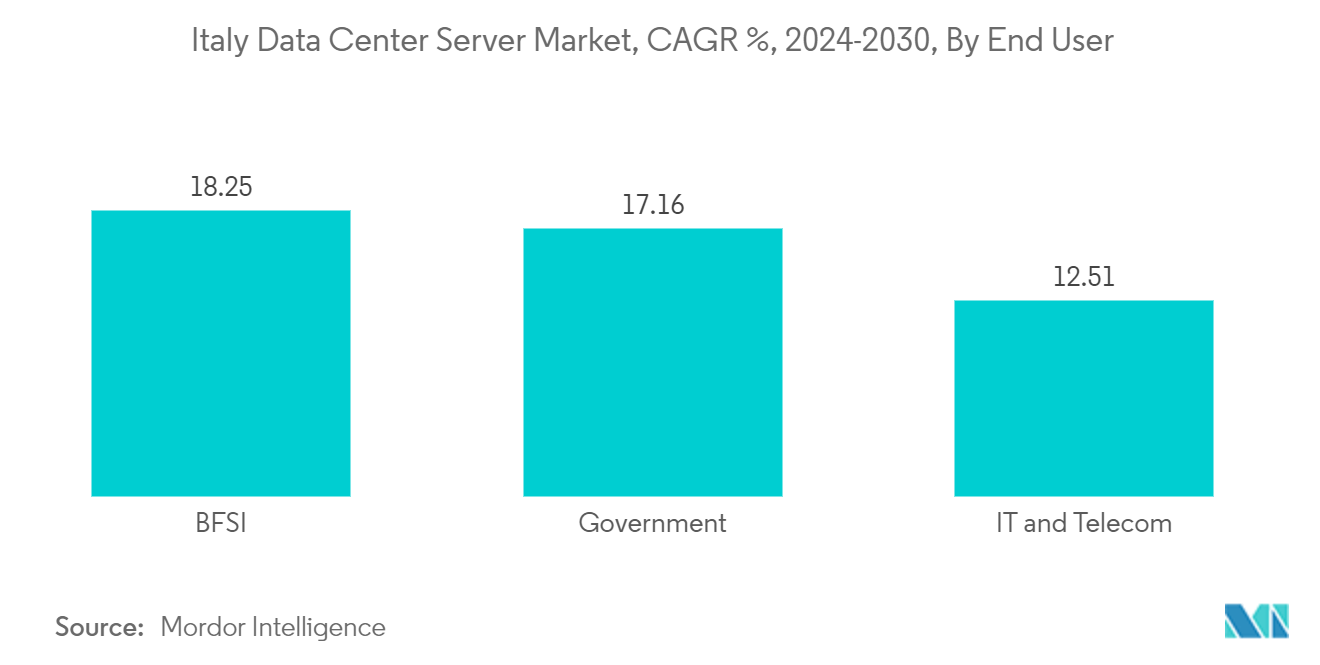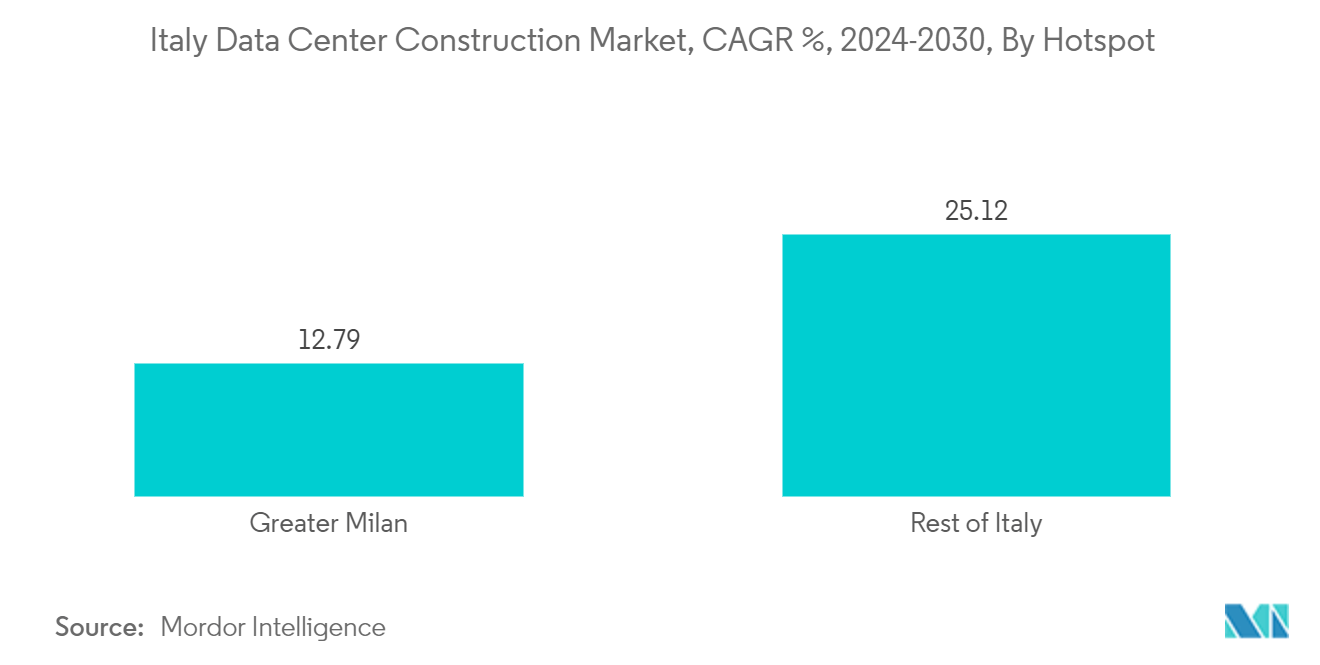Market Trends of Italy Data Center Server Industry
BFSI to Hold Significant Market Share
- Media & entertainment, manufacturing, BFSI, e-commerce, and government services are the end users likely to catalyze growing IT load capacity by increasing data consumption. It is expected that the Italian government will improve its services, leading to a rise in power capacity from 23.8 MW in 2023 to 61.6 MW in 2029.
- The government, an end user, is projected to hold 8% of the market share in 2023 and grow to 9% by 2029. Manufacturing is expected to grow by 19.2% during the forecast period. It is expected to reach 95.8 MW in 2029. Manufacturing accounts for 23.6% of GDP. Italy has around 5,000 companies and is known for its machinery. Italy has already introduced Industry 4.0 to its manufacturing companies to cater to surplus demand.
- Automation and technology are expected to catalyze data consumption. Additionally, factors such as online shopping would contribute to the increasing generation of data and processing facilities. As users grow more inclined to online shopping with attractive deals offered, this would lead to a rise in digital payment services and traffic on websites, thus increasing data consumption. All these factors would contribute to a significant increase in consumption, boosting the demand for data centers.

Blade Server To Have The Highest Market Share
- The type of server that's designed to be in a data center is the blade server. These servers share a common chassis or enclosure, making them thinner and more compact. Space efficiency, modularity, reduced cable fragmentation, efficient cooling, centralized management, frequency availability, and energy efficiency are some of the main features and benefits of blade servers.
- Single or multiple server blades can be inserted or removed without distressing another running system. It reduces hardware costs, which is likely to entice industry players to adopt the technology, thereby fueling market growth. Additionally, each server blade does not consist of a distinct infrastructure and chassis, owing to which the product is relatively cheaper as compared to other solutions.
- To cater to end-user needs, the top companies are focusing on blade servers in data centers. The prominent companies that manufacture blade servers in Italy include Dell (PowerEdge M Series), HPE (ProLiant BL Series), Cisco (UCS Blade Servers), and Lenovo (ThinkSystem Blade Servers), among others.
- The growing adoption of technologies such as cloud computing, artificial intelligence (AI), and IT services by businesses is propelling the use of servers in data centers. This sector is driven by the increased demand for streaming solutions and hyperscale data centers. Hyperscale computing, which is considered to be cost-effective in terms of enabling applications for large amounts of data, relies on the highly scalable server architecture and virtual networks that are becoming more and more popular.
- In the future, the growing internet penetration and fiber connectivity will push the country digitally, which could propel Italy's digital economy. For instance, the evolution of healthcare would focus on reengineering clinical care and operations around digital health and the pervasive, real-time use of data and advanced analytics to achieve these goals. Such achievements would require storing a large amount of data, driving the need for data center blade servers over the forecast period.
- Further, the development of smart cities in Milan and Bergamo regions may trigger the increase in smart devices, requiring data centers to process these huge pools of data, simultaneously increasing the IT load capacity over the years. Such developments act as a catalyst for the market studied.


